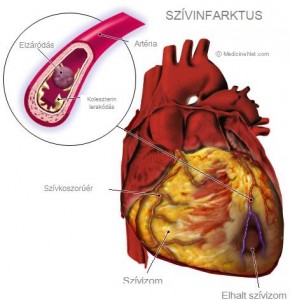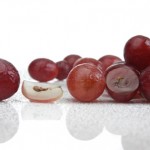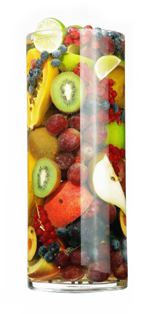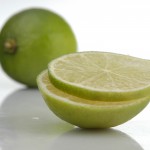Antioxidants
ANTIOXIDANT PROTECTION WITH FLAVONOIDS
By antioxidants we usually mean natural or artificial compounds that are present in either organisms or foods. These materials are usually organic compounds. Antioxidant defense is the main protective mechanism against oxidation in the living body.
For most people living in the 21st century the concept of health is a vague and unknown.
Health doesn’t only refer to the absence of physical illness but preventative maintenance and the balance of mind and body. According to surveys, almost 60% of the Hungarian adult population suffers from cardiovascular problems. Risk factors include obesity, smoking, drugs, alcohol abuse, inadequate nutrition, exercise, disease susceptibility and stress.
In addition to cardiovascular disease, unfortunately, many people, including youth and children struggle with the malignant diseases as well. Although there are hereditary predispositions to these problems, we also have role in preventing or slowing down their processes. If we make up our bodies is the least environmentally harmful effects, it does not want to decrease the possibility of developing disease. If we protect our bodies from the harmful effects of our environment then we have a much lesser chance of getting ill.
It is very important, not only with your doctor, herbalist, if there is already a serious problem, but also the prevention stage. It is very important for us to consult with our doctor once an illness has arisen but also in the prevention stage. We should give much more emphasis to prevention with the help of good quality dietary supplements which we can find in any pharmacy or drug store. These types of products are made with special procedures that they contain flavonoids and antioxidants found in fruit and thus have great biological characteristics.
The fruit of vitamins, minerals and fiber so that the least damage to our bodies may be without. With these procedures the vitamins, minerals and fibers enter our bodies undamaged. By the consumption of such products, our bodies get amounts of antioxidants and flavonoids that would be matched only by eating an incredible amount of fruit daily (more than 2 kilograms).
A general definition of an antioxidant is a molecule which is present in low concentration compared to material that can oxidize. By this it slows down or entirely stops the oxidation process. The potency of so-called antioxidants is defined in terms of induction time. The more effective an antioxidant is, the longer the induction period and the later the oxidation of the attacked molecule.
In terms of mechanisms of effect antioxidants can be of primary or secondary nature. The primary or chain-breaking antioxidants are compounds that can neutralize lipid free radicals by the transfer of hydrogen and changing them into less reactive compounds. These relatively stable compounds are no longer able to participate in the propagation of lipid peroxidation thus interrupting the chain reaction.
The primary antioxidants are effective in the induction period by delaying the oxidation process. The primary antioxidants are phenol based molecules, tocopherols (compounds with vitamin E- like effects), gallic acid and its derivatives, flavonoids and other components.
The secondary or preventive antioxidants prevent the oxidation of lipids in a different way. They either inhibit the initiation phase (the first step of lipid peroxidation) by oxidizing instead of the lipid molecules, or transform the products of the oxidation processes into non-toxic material during or after the chemical reaction phase by way of a process called reduction. Natural antioxidants such as phospholipids (which synergize with primal antioxidants) belong to this group as well as citric acid. Natural antioxidants such as phospholipids and citric acid belong to this category and they synergize with primary antioxidants.
The essential characteristic of antioxidants is that most of them can inhibit the oxidation process through multiple mechanisms of action and can act in synergy with each other. The synergism in this case means that two or more combined molecules that are side by side have a greater effect than if the same amount of molecules were working separately. This phenomenon is because of the following: when the antioxidant molecule prevents the oxidation of the target compound its chemical structure changes. In order for it to protect the next target molecule it has to change back to its original form.
This will where the other antioxidants come in to help. Some antioxidants protect the target molecule and others help other antioxidants change back to their original form. If there are a lot of antioxidant molecules in a system, then there is always a molecule available for filling the specific function needed. Thus certain antioxidants are able to strengthen the effects others.
Defense against the free radical reactions by antioxidant mechanisms is made up of enzyme and non-enzyme elements. Out of these elements some can only be synthesized by plants (vitamins, flavonoids) and can only be absorbed by our diet through eating. Others (mainly enzymes, glucose, and uric acid) can be produced by our bodies and bodies of animals.Enzymes are protein-type molecules. Enzymes are catalysts in most chemical and biochemical processes in bodies of living organisms.
These biological catalysts are the main feature that allows two or more compounds to meet and react. Their main characteristic is that they help compounds that would react to one another to be able to meet. They ensure optimal location for the compounds so they can react to one another. In living organisms, chemical reactions cannot take place without enzymes. A characteristic of enzymes is that they do not go through any changes during these reactions.
The best-known members of the antioxidant defense system are catalase, glutathione peroxidase and superoxide dismutase enzymes, which transform a variety of free radicals. Molecules that are responsible for cleaning out the toxic substances from our body and enzymes that repair damage to DNA structure are important members of the defense mechanism in our body. The small molecule antioxidants are such well-known vitamins as Vitamins C, E, A, and its pro-vitamin J3-carotene.
Most people are aware of the fact that we can get these vitamins from eating plants except for vitamin A, which we get from eating meat. In addition to vitamins other types of molecules can also act as antioxidants. These include falvonoids, phenolic acids and their isoflavone derivatives, fitin acids, certain sulfurous amino acids, reduced glutathione, selenium, in certain circumstances glucose, uric acid, bilirubin, ubiquinone (QIO) and liponic acid. Since some of these compounds are found in fruit and vegetables the consumption of these foods significantly contribute to keeping our body’s pro-oxidant/antioxidant levels in balance. Pro-oxidants like the previously mentioned free radicals are compounds that cause the oxidation of molecules.
THE SOURCES OF ANTIOXIDANT VITAMINS
VITAMIN E:
- vegetable oils, cold pressed oils from oilseeds
- vegetables, fruits
- beef, poultry, fish
VITAMIN C:
- fruit: citrus fruits, strawberries, rosehips
- vegetables: tomatoes, green leafy vegetables, pickled cabbage
KAROTONOIDS:
- ß-carotene: yellow-orange vegetables and fruits, dark green leafy vegetables
Vegetables
- ß-carotene: carrots
- Lycopene: tomatoes
- lutein, zeaxanthin: dark green leafy vegetables
- ß-cryptoxanthin: citrus
VITAMIN A:
- chicken, beef, pork and foie gras, preparations of liver, fatty cheeses, egg yolks, cream
Ascorbic acid (vitamin C) is a water-soluble vitamin. It acts as a primary antioxidant and protects the membranes that separate cells and lipids from the harmful effects of free radicals. They are able to capture a high number of free radicals. Ascorbic acid is able to regenerate it vitamin E through a synergic relationship. Inhibits the effects of oxidation agents in cigarette smoke.
The tocopherols (vitamin E-active substances) are the most important lipid-phase antioxidants. Tocopherol compounds have the following characteristics: Side-chains found in their molecules are fat soluble while their ring structured parts are water soluble. This way they can have antioxidant effects on both water and fat soluble molecules. One tocopherol molecule is capable of protecting thousands of lipid molecules from oxidation.
The addition to ascorbic acid, cysteine, reduced glutathione can also regenerate some of the tocopherol compounds.
Out of the carotenoids beta-carotene is the one we usually hear about, mainly because of its provitamin effect and its frequency. Provitamin effect means that, under appropriate conditions vitamin A is produced from it, however, this process takes place only in animals, so we can only get it from eating meat.
The plants, however, occur in very large numbers of other carotenoids (ex. lycopene, lutein, zeaxanthin), which also have significant antioxidant effect. On the other hand a high number of karotinoids are found in plants. They have significant antioxidant effects. Karotinoids have mainly primary antioxidant effects.
A number of studies have been made concerning the consumption of antioxidant vitamins and their connection to cardiovascular diseases and cancer. In these studies scientists also looked at the frequency of the presence of cancer and other illnesses that cause death. These observations can be briefly summarized by the following:
Out of the antioxidant vitamins the lack of vitamin C has harmful effects on the circulatory system. It has protective qualities concerning certain tumors but plays an antioxidant role mainly in the regeneration of carotenoid and tocophenol. The daily requirement for consuming vitamin C is 60 mg. Any excess amount is unnecessary. Vitamin E plays a primary role in the prevention of cardiovascular disease. Due to its side effects (increased bleeding) the daily need of tocopherol (12mg) in not recommended for healthy people. A daily intake of Carotenoids (6 mg / 3-carotene) is useful for the prevention of both cardiovascular disease and cancer. Prophylactic use of higher-dose application of the literature, however, is considered. As a preventative action the intake of a higher dosage can be considered. According to tests up to this day the intake of antioxidants in combination has been proven to be more effective than separately. This is because the antioxidants, more specifically the vitamins form a mutual complementary system. This system’s best form is by eating the fruit, vegetables themselves. By consuming high-doses of antioxidants by themselves instead of getting benefits we can get contrary effects.






